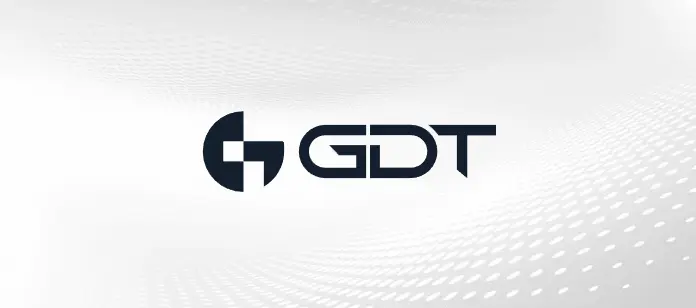Microsoft Copilot promises AI-powered productivity gains that will redefine how work gets done. Already, Microsoft Copilot is transforming the way organizations and their workforce communicate and function via streamlined automation and AI workflow. In practice, however, many cybersecurity professionals face significant adoption hurdles related to Microsoft Copilot security, including AI risk management and data protection.
Understanding Microsoft Copilot and its risks
Understanding Microsoft Copilot’s architecture is essential for navigating security hurdles. Microsoft Copilot operates by orchestrating data flows between users, organizational data sources (such as Microsoft Graph), and powerful large language models (LLMs) hosted in Microsoft Azure. This orchestration involves multiple steps and integrates with numerous technologies to provide users with responses.
At a high level, the following outlines the process Microsoft Copilot uses to respond to the user’s prompt and the potential risks involved at each step:
1. User identity and access permissions are validated by Microsoft Entra ID to determine what data sources within Microsoft 365 the user can query.
Risks:
- If user permissions are too broad, Copilot will inherit and potentially expose too much sensitive data.
- Old or legacy accounts with forgotten access rights can cause unintended data exposure.
- If a user identity is compromised, an attacker could use Copilot to harvest a wide variety of confidential content.
- Guest users and external contractors who retain permissions may inadvertently gain access to sensitive information through Copilot.
2. Microsoft Copilot queries data from the Microsoft Graph, querying Microsoft Purview to ensure the query only retrieves content the user is entitled to access.
Risks:
- Poorly configured sharing or access controls (at document, site, or team level) can result in Copilot surfacing information to unauthorized users.
- If data isn’t properly classified or labeled, Copilot could include private or regulated information in its response.
- Misconfigured connectors or external plugins may expose additional data sources unintentionally.
- User prompts could be exploited to surface or combine data that would otherwise remain compartmentalized.
3. The relevant data is then aggregated and prepared as input for the LLMs in Azure.
Risks:
- Aggregating data from multiple sources can create an unintended picture, revealing sensitive trends or insights not obvious in isolation.
- Advanced threats may attempt to use prompt manipulation or model inversion to extract original content or reveal confidential patterns.
- If there are vulnerabilities in cloud processing or if security controls for integrated plugins are weak, data could be exposed beyond the intended boundary.
4. Before information is sent to the user, Microsoft Purview policies are evaluated, ensuring that responses comply with enterprise data governance requirements.
Risks:
- If DLP or governance policies are incomplete, not comprehensive, or lack real-time enforcement, sensitive data could still be leaked.
- Overly aggressive policy settings could hinder Copilot’s usefulness, leading to user workarounds and shadow IT.
- If auditing and monitoring solutions aren’t in place or not configured properly, incidents may go unnoticed, hampering investigations and compliance efforts.
Copilot data governance: People, processes, and technology
The success of Microsoft Copilot depends equally on how well people, processes, and technology are aligned. On the people side, organizations must establish clear communication around AI risk, empower staff to identify and report suspicious behaviors, and foster a culture of responsible AI use. For processes, well-documented workflows, from plugin approvals to incident escalation and data lifecycle management, play an essential role in staying ahead of threats. Technologically, robust integration between identity, governance, and DLP tooling underpin both automation and risk reduction. If any element lags, the pilot stalls, and global rollout becomes elusive.
According to Gartner’s 2025 Microsoft 365 Copilot Survey, 94% of the survey respondents report productivity gains from Microsoft Copilot. However, only 6% of those surveyed have completed global rollouts. About 74% of respondents remain locked in their deployment pilot. These pilots are not stalling due to the technology. These rollouts typically stall due to inadequate Copilot data governance. Microsoft Copilot is only as secure and effective as the governance foundation beneath it; organizations that realize this and address data governance are best positioned to move beyond the pilot phase for a successful and secure global rollout.
Microsoft Copilot adoption barriers
Transitioning from the pilot phase to global adoption requires much more than technology. Organizations must embrace a holistic security foundation for Microsoft Copilot focused on data maturity and reinforced by identity management, policy definition, process, technical controls, and asset lifecycle management. To underscore the need for this foundation, this section highlights common barriers to global adoption of Microsoft Copilot.
Effective global deployment of Microsoft Copilot also demands strong executive sponsorship and ongoing change management. Business leaders must support policy enforcement and transparency, align Microsoft Copilot goals with organizational risk appetite, and regularly review metrics to ensure safe adoption. Security teams should embed themselves in every Microsoft Copilot pilot; their feedback should shape production configurations and incident readiness. Only when people, processes, and technology come together, backed by leadership and systematic change management, can an organization truly transform to realize Microsoft Copilot adoption benefits.
Shadow AI and plugin sprawl
In my recent article, Why you need to address Shadow AI—and how to get started, I outlined the risks related to the proliferation of Shadow AI as it relates to public AI tools. Employees are keen to use AI tools, often either ignoring or not understanding the risks associated with inputting company data into these public AI tools. If sufficient controls are not configured when implementing Microsoft Copilot, departments eager to realize productivity gains may be able to connect Microsoft Copilot plugins, or worse, unsanctioned external AI tools, without security oversight. These Microsoft Copilot plugins and unsanctioned AI tools can expose sensitive data beyond company boundaries, sometimes sharing private data inappropriately and unknowingly with third parties.
Governance should include policies for sanctioned AI use, defining which AI tools are permitted for use, both in general and specifically with respect to utilizing private company data within the AI tool. Additionally, there should be a policy for plugin approval, third-party integrations, and understanding and visibility into data flows.
Poor data classification and governance
Microsoft Copilot data governance is essential, as Copilot relies on well-classified and accurate data. Many organizations still have data classification issues, duplicate or outdated documents, and unlabeled documents. This poorly classified data fuels Microsoft Copilot responses, resulting in misleading, irrelevant, and risky outputs. In addition, many organizations still operate at an ad-hoc or defined level of data governance. Weak data governance slows or stops Microsoft Copilot deployment, leading to increased risk, as there is little or no policy defining how Microsoft Copilot interacts with data.
Mature data governance frameworks specify the who, what, why, and how of data access and use. These items help classify data and set permissions. Without answering these questions, companies often face security and compliance failures due to experiencing permissions sprawl and having unclassified data.
Unmanaged agent proliferation
When organizations fail to manage Microsoft 365 permissions properly, departments hoping to get more out of Microsoft Copilot can connect plugins or external AI tools without oversight. These connections create uncontrolled interactions between Microsoft Copilot and potentially unsanctioned systems. These interactions can send sensitive information beyond company boundaries and into third-party AI tools—information that can be stored, or worse, used by third-party AI tools, and potentially exposed to unintended parties. Additionally, when the internal security team has little to no oversight, they’ll have little to no visibility into what data is being shared and with whom.
Additionally, ad-hoc-created agents lack centralized lifecycle management. This means that companies can rapidly accumulate untracked agents, creating fragmented governance and security, and introducing the risk that these agents become unused yet active. Unused agents likely still have permission and rights to perform tasks, leaving them vulnerable to malicious use. Such use is challenging for IT and security teams to find, as they likely lack visibility into how and why these agents should be interacting with data, creating “legacy risk.”
Governance and controls should include unified policies for plugin approvals. These approvals should include third-party vetting, integration vetting, and visibility into data flows. Additionally, agent registration, retirement, and tracking ownership should be core elements of these policies. Failure to create these policies and build a solid governance structure injects risks related to shadow integrations and agents.
Lack of incident response playbooks
Most incident response programs do not consider Microsoft Copilot. Companies must extend their incident response planning to include AI-risk scenarios, such as those related to Microsoft Copilot. Many organizations lack tested playbooks for containment, contingency planning, investigation, and communication when Microsoft Copilot malfunctions, hallucinates, or gets abused.
Incident response for organizations using Microsoft Copilot should address:
- Containment of hallucinations or unsafe outputs (e.g., disabling specific prompts or restricting plugin connectivity).
- Detection and monitoring of anomalous agent or plugin behavior, such as unexpected data transfers.
- Governance escalation paths, ensuring security teams can intervene quickly in high-risk use cases.
- Communication strategies for internal stakeholders and external regulators when Microsoft Copilot misuse involves sensitive information.
As always, incident response teams must be cross-functional, including legal, data privacy, and communications, and be ready to coordinate with business units and regulators. Organizations may consider scenario-based tabletop exercises to rehearse AI-specific threat scenarios, track lessons learned, and continually improve playbooks. A comprehensive post-mortem analysis after any Microsoft Copilot-linked incident should be mandatory to identify blind spots and improve controls for future resilience. In addition to the current concerns and threats causing Microsoft Copilot pilots to stall, companies must also anticipate other ways in which threat actors will exploit Microsoft Copilot in the future.
Zero-click autonomous attacks
Recent vulnerabilities such as Echoleak[1] and the audit log bypass vulnerability[2] represent a shift in potential attack vectors. Unlike traditional phishing, which requires user interaction and typical logging evasion requiring other techniques, Microsoft Copilot can be weaponized via commands hidden in data sources used as references. Malicious content hidden in calendar invites, emails, photos, documents, or chat messages can trigger data access or exfiltration without any user knowledge or engagement.
Because attackers can use any information Microsoft Copilot ingests as a potential control mechanism, organizations must implement real-time scanning on all input channels to Microsoft Copilot. Ensure that the scanning mechanism uses behavioral analytics to detect unusual activity patterns and automatically control Microsoft Copilot outputs that exhibit unusual or malicious behavior.
New risks will always emerge as organizational boundaries blur, including insider threat amplification through AI, unintentional information disclosure via prompt leakage, plugin supply chain compromise, and regulatory investigations into AI outcomes. Companies must integrate Microsoft Copilot security risk into their overall risk register, forecasting impacts not only from external actors but also from well-meaning employees, technical errors, or compliance policy drift.
The bottom line: Microsoft Copilot data governance is non-negotiable
Within many companies, the question isn’t whether a company will deploy Microsoft Copilot. It’s whether it will be effective and secure. The companies that take the time to lay the proper governance foundations for Microsoft Copilot data protection and successfully get beyond their pilot phase will gain a competitive advantage. Those that move beyond their pilot without laying a solid governance foundation face the consequences of AI-amplified data risks.
Success requires thinking beyond deployment to transformation. Companies must reimagine how they govern their organization, understand their data, manage risk, and empower users in an AI-driven world. Essentially, these companies are laying foundational governance on which they can implement technical controls to properly manage and mitigate risks Microsoft Copilot introduces to an organization.
If you’re looking to advance Microsoft Copilot governance and improve AI risk management and data protection, consider looking into our complimentary Microsoft Copilot security workshop. It can help your organization chart the optimal path toward data governance maturity, turning ambition into an actionable strategy. For step-by-step guidance to help you achieve successful implementation, check out my follow-up article, Microsoft Copilot Security: A deployment roadmap.
[1] Lakshmanan, Ravie (2025), Zero-Click AI Vulnerability Exposes Microsoft 365 Copilot Data Without User Interaction, https://thehackernews.com/2025/06/zero-click-ai-vulnerability-exposes.html (date accessed: Sept. 1, 2025)
[2] Infoshare Systems (2025), Microsoft M365 Copilot Flaw Lets Attackers Bypass Audit Logs and Access Sensitive Data Undetected, https://www.varutra.com/ctp/threatpost/postDetails/Microsoft-M365-Copilot-Flaw-Lets-Attackers-Bypass-Audit-Logs-and-Access-Sensitive-Data-Undetected/eU9nM0FUVlJlejlvRHRialk1WFUrUT09 (date accessed: Sept. 1, 2025)



